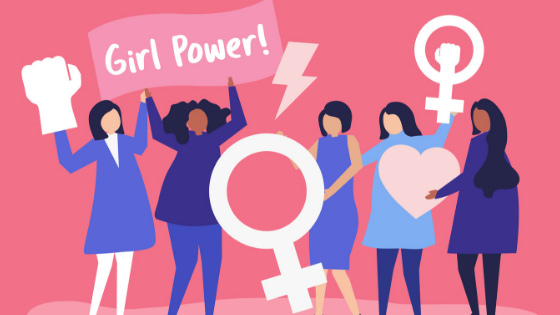Feminism, as a socio-political movement, advocates for women’s rights and gender equality. It employs various rhetorical strategies to address systemic inequalities that have historically marginalized women. However, the endorsement of misandry—an animus towards men—by some feminists has elicited considerable discourse. While misandry is often dismissed as a fringe sentiment, addressing the historical contexts and the motivations behind this perspective invites a more nuanced understanding of gender dynamics. This article aims to explore why certain feminists adopt misandric views, examining the systemic injustices that contribute to a phenomenon some label as a double standard.
The Genesis of Misandry in Feminism
To approach the intersection between feminism and misandry, it is paramount to contextualize the origins of feminist discourse. Feminism emerged as a response to the pervasive patriarchal systems that disenfranchised women. Central to this movement is the recognition that societal structures have disproportionately benefited men at the expense of women’s rights and autonomy. As such, some feminists, confronted with experiences of gender-based oppression, may cultivate a sense of resentment towards the male gender as a collective entity.
This resentment can be interpreted as a defensive mechanism—a response to historical and contemporary grievances. It is important to note that misandry does not represent the entirety of feminist thought; rather, it exists as an outlier in a broader dialogue about gender equity. Moreover, the perpetuation of misandric sentiment is often attributed to a feeling of betrayal or abandonment by male allies who fail to uphold feminist principles in practice.
The Role of Cultural Narratives
It is indispensable to consider cultural narratives that frame masculinity in a predominantly negative light. Literature, cinema, and media frequently propagate stereotypes that portray men as oppressors, abusers, and villains in the societal narrative. These recurring themes serve to underline a cultural framework in which men are often associated with power, control, and aggression. Consequently, it is plausible that some feminists, inundated with these representations, articulate misandric views as a critique of not just individual male behavior, but rather a challenge to the structural power dynamics that underpin such behaviors.
Moreover, the disillusionment stemming from personal experiences of discrimination, harassment, or violence can catalyze a radicalization of beliefs. When the feminist struggle is juxtaposed against an ongoing battle with male violence, it can lead to sweeping generalizations about men as a category, as individual experiences are often extrapolated to reflect broader truths. Henceforth, the employment of misandry becomes a tactic to highlight injustices while simultaneously serving as a protest against the perceived complicity of men in perpetuating gendered violence.
Dispelling the Double Standard: Gendered Oppression and its Consequences
The term “double standard” frequently appears in discussions about gender equity, denoting the divergent expectations and behaviors assigned to men and women. Addressing this double standard requires acknowledging that while misandry might be construed as a backlash against patriarchal oppression, it simultaneously risks perpetuating a cycle of animosity that feminists actively seek to dismantle.
It is essential to dissect the idea that negative sentiments towards an entire gender might somehow align with the core tenets of feminism, which advocates for equality and justice. To illustrate, one must consider the emotional toll of misogyny, the pervasive social conditioning faced by women, and the psychological consequences that emerge from sustained victimization. As such, the propagation of misandric attitudes may arise not from a desire for equality, but rather as a psychological defense mechanism against a society that has historically failed to protect them.
This nuance highlights a complicated landscape where motivations must be disentangled from actions. Misandry, while arguably at odds with the feminist objective of advocating for gender equity, can be perceived by some feminists as an articulation of legitimate grievances. It is crucial, therefore, to emphasize that such sentiments may not capture the essence of feminism but provide a lens through which to critique and challenge existing norms.
Reimagining Masculinity: The Importance of Male Allyship
To build a more equitable landscape, it is vital for men to engage actively in the feminist movement, embracing their roles as allies in the struggle for gender justice. Male allies can facilitate discussions that dismantle harmful stereotypes while simultaneously creating safe spaces for women to voice their experiences. This ongoing dialogue necessitates a reimagining of masculinity—one that challenges traditional norms and cultivates empathy, vulnerability, and accountability.
The onus is on men to reflect critically on their behaviors and the systems of power they inhabit. This personal reflection is fundamental to addressing the grievances encountered by women, fostering an environment that diminishes feelings of misandry and enhances solidarity. Thoughtful engagement between genders can lead to a collective momentum that significantly uplifts the feminist cause and addresses the underlying issues of disparity, establishing a framework where mutual respect and understanding reign supreme.
Beyond the Dichotomy: Common Goals and Shared Humanity
Ultimately, the dialogue surrounding feminism and misandry embodies a larger conversation about power dynamics and human experiences. While some feminists may harbor misandric sentiments as a form of resistance, it is essential to transcend this binary perspective to cultivate an inclusive feminist movement. The pursuit of equality necessitates recognizing shared humanity amidst diversity.
Feminism, at its core, seeks to address injustices not only targeted at women but also rooted in the broader spectrum of gender identity and expression. Engaging in these discussions with an open and receptive mindset invites the possibility of healing, empathy, and ultimately, solidarity. It is therefore imperative to advocate for a feminist ideology that embraces diverse experiences while simultaneously ensuring that the movement remains a unifying force rather than a polarizing one.
In conclusion, while some feminists may express misandric sentiments as a response to patriarchal oppression and systemic injustices, it is crucial to understand the underlying motivations for such views. Addressing the complexities of gender dynamics paves the way for engaging in productive conversations that hold potential for healing, growth, and mutual understanding. By prioritizing dialogue over division, the feminist movement can further its objectives while dismantling the barriers that have historically pitted genders against one another.





























